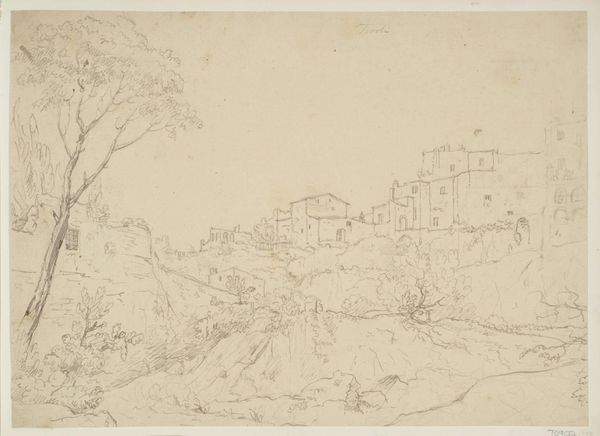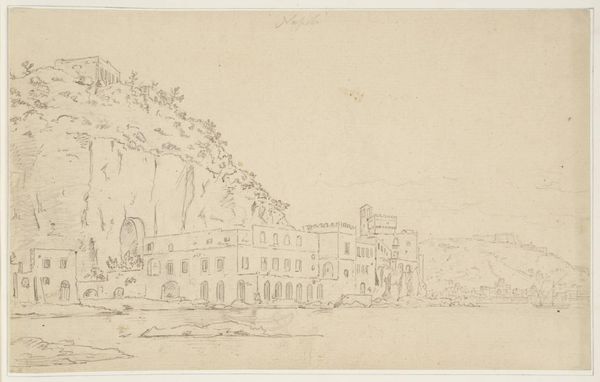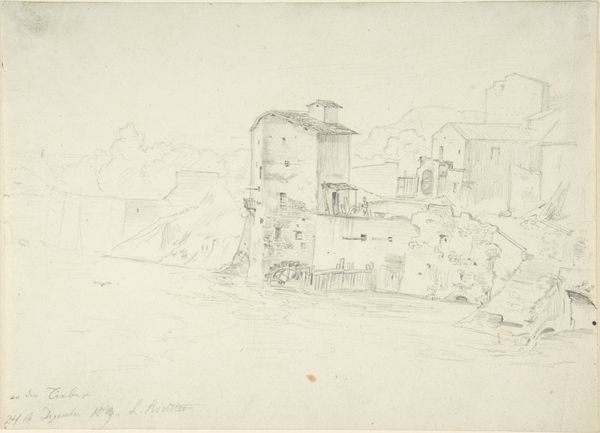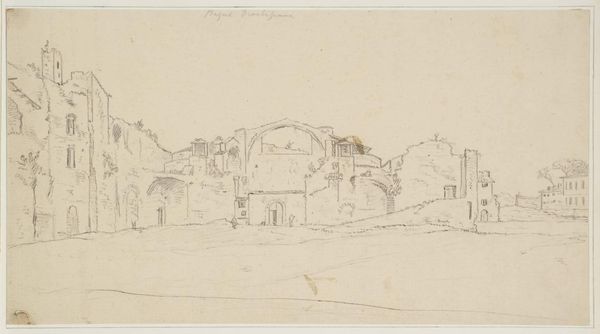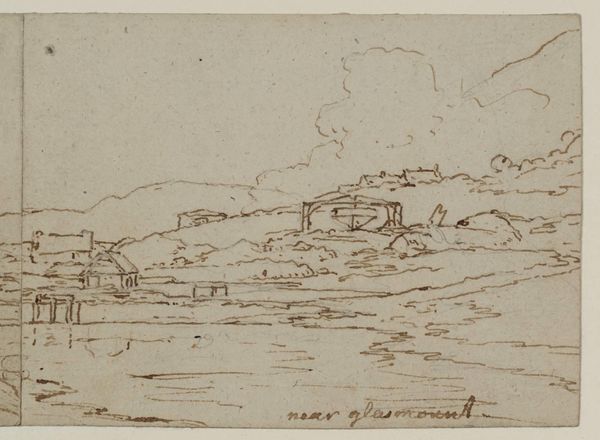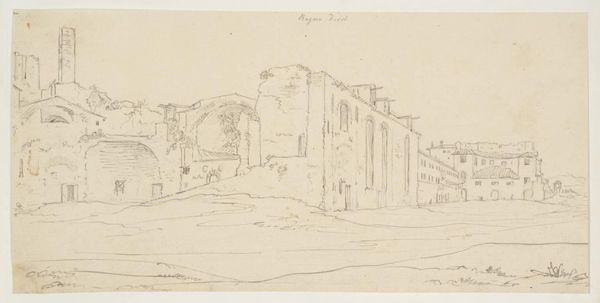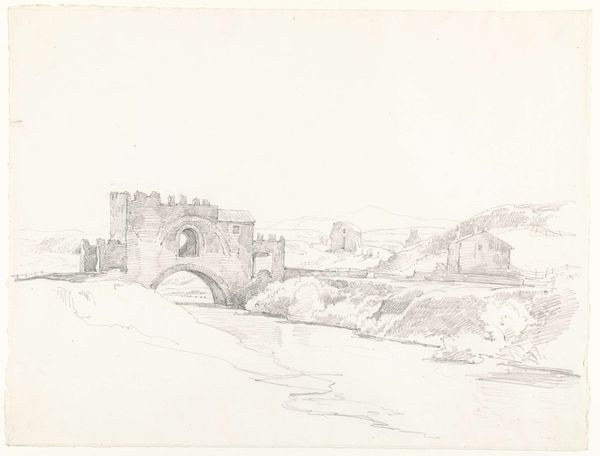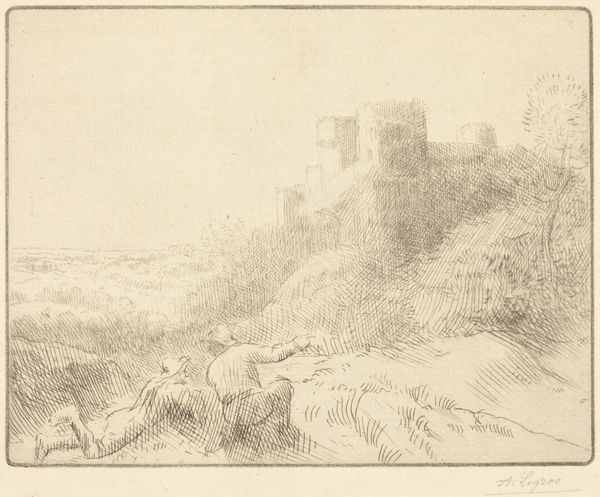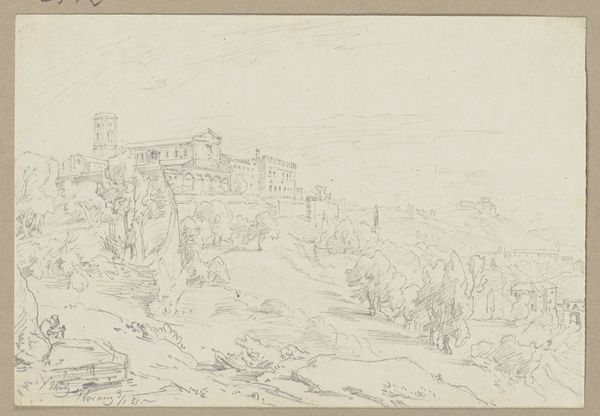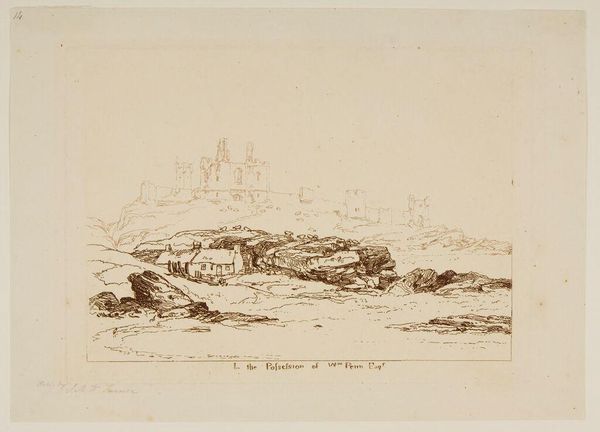
Dimensions: support: 180 x 300 mm
Copyright: CC-BY-NC-ND 4.0 DEED, Photo: Tate
Editor: So, here we have William Marlow's "Avignon, the Palace Seen from the Back," a delicate pencil drawing. It feels like a memory, hazy and a bit dreamlike. What strikes you about it? Curator: It's like stumbling upon a half-forgotten postcard, isn't it? I'm drawn to the way Marlow uses line – so economical, yet it evokes such a sense of place. Notice how the Palace looms, almost a character in itself, observing the viewer as much as we observe it. It also whispers of journeys. Where do you think Marlow stood when he sketched this? Editor: Perhaps on a hill overlooking the city? The vantage point does feel rather elevated. Curator: Exactly! It's a perspective that invites us to consider the palace not just as architecture, but as a part of the landscape, a silent witness to history. Marlow captures that beautifully. Editor: I never thought about it that way. Now I see how the drawing invites a more intimate dialogue with history and place. Curator: Precisely. Art has a funny way of doing that, doesn't it?
